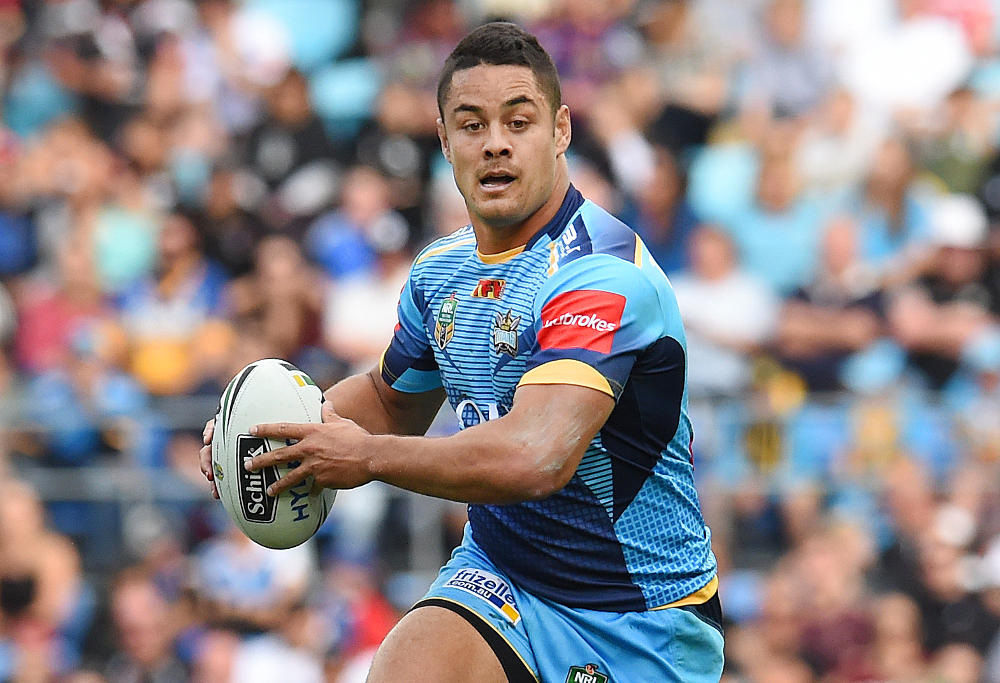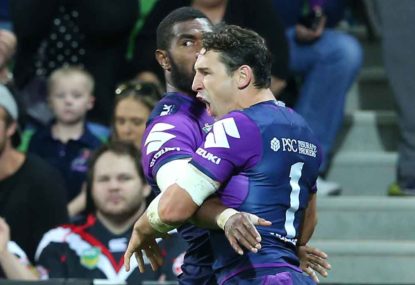Rugby league is a challenging sport for me to place. As a West Australian, my exposure to the code has been limited. Fortunately, we have rugby league expert and coach extraordinaire, Rohan Smith, to lend a helping hand.
Amongst our five sports, the attribute that sticks out most for rugby league is power. Like cricket, a lot of rugby league’s action is pure explosiveness: sprinting into tackles, grappling, breaking tackles, executing tackles, accelerating after breaking the line.
There is far less running in rugby league than there is in Australian rules football, but the power comparison is not really a comparison.
It shows as early as the recruitment stage for young players.
“Rugby league is such a game of physical impact attrition,” Rohan says.
“The first thing most coaches look for are the physical capacity for repeat bouts of wrestle, collision and agility – an appropriate size and weight for their position. Then skill and game sense will then separate or elevate the elite from the fringe players.”
The average listed NRL player in 2017 weighs 99 kilograms, around 14 kilograms heavier than an Australian rules player but a few kilograms lighter than the average union professional.
Cricketers and footballers don’t come close to triple figures. According to NRL club websites, 14 players (2.5 per cent) weigh in at over 120 kilograms, including two monsters – Sam Kasiano and Mose Masoe – tipping the scales at 130 big ones. In Super Rugby, that number rises to 45 (9.1 per cent of listed players).
It’s clear there is a perception that rugby league player body types are converging on a standardised archetype. Rohan agrees.

(AAP Image/Mick Tsikas)
“The body shapes have become similar. Yardage carriers – wingers, centres, backrowers, front rowers – mostly sit between 96-110kg, with the odd exception,” Rohan said.
“Even fullbacks, halves and hookers can be big, but usually in the 86-92kg range. So of the 17 players that play, 12-13 of them are big!”
That doesn’t mean smaller players can’t thrive. Indeed, last year’s joint Dally M medallists were 191cm, 113-kilogram Jason Taumalolo and 178cm, 89-kilogram Cooper Cronk. The pair play different positions – second row and halfback respectively – but still performed at a level that warranted the status of best player in the game.
In a similar vein, Johnathan Thurston is one of the most influential athletes in the NRL; he’s just 179cm tall and weighs 87 kilograms.
The biggest reason for the difference in mass between league players (and union players) and Australian rules players is the level of endurance required.
Rohan provided me with some de-identified GPS data from a recent coaching appointment. The data showed players travelled an average of 5.9 kilometres per game, or 7.9 kilometres per 80 minutes. Of this, less than ten per cent, or around 500 metres, was classed as ‘high intensity running’.
Rugby league and Australian rules are chalk and cheese. League requires an ability to accelerate and make the most of Albert Einstein’s theory of relativity, where Australian rules players need to run all day.
But Rohan says that doesn’t mean endurance isn’t important.
“Endurance keeps you in games, but having top-end speed wins big games. There are plenty of examples of players with outstanding speed for their position acting as the most influential players on the ground: Jarryd Hayne, Greg Inglis, Billy Slater, Sonny Bill Williams, Scott Te’o, Sam Burgess, and Michael Jennings.
“Outside of playmakers, in most cases, speed plus endurance equals a big money player!”
A lot of what we’ve talked about here is at the raw end of athletic performance: acceleration, speed and strength. There’s subtlety to rugby league, too.
“Acceleration is the key to rugby league. Players can be fast, but they will rarely hit their max speed,” said Rohan.
“But the ability to accelerate, decelerate and change direction quickly are significant factors in elite performance.”

(AAP Image/Dan Peled)
Rugby league requires a unique kind of agility. It’s a combination of strength-based power and an ability to move laterally and misdirect an opponent. Making an opponent miss a tackle is a critical controllable action that the fledging statistics community within the NRL seems to hold near and dear.
It makes sense; league is ultimately a highly structured game with regulated interactions that centre on tackles. Making an opponent miss a tackle, and breaking the line as a result, can gain crucial yardage or lead directly to a score.
Key Information
Ryan and Rohan are making these judgments based on the highest level of domestic competition in each of the sports – except for cricket, where the Australian Test team seems like the more appropriate comparator.
In this series, each sport will be ranked on key categories. We’ll reveal the final scores and the top sport at the end of the series.
Endurance: the length of time an athlete is required to perform at their peak, in a game and over the course of a season.
Power: how explosive an athlete needs to be, in both speed and strength terms, over and above the “resting” state of play.
Agility: a measure of an athlete’s required evasiveness, ability to change direction and be aware of those around them.
Speed: how fast is a player required to move around the field, both in sprints and general play.
Stay tuned for the next instalment when we’ll discuss rugby union.
The full series
» Part One: AFL
» Part Two: Cricket
» Part Three: Rugby league
» Part Four: Rugby union
» Part Five: Football
» Part Six: Final Results
This series is sponsored by by POWERADE, fuelling rivalry through the POWERADE POWERSCORE. The Powerade Powerscore, developed in conjunction with the New South Wales Institute of Sport, allows you to compare yourself to mates and elite athletes.































































































